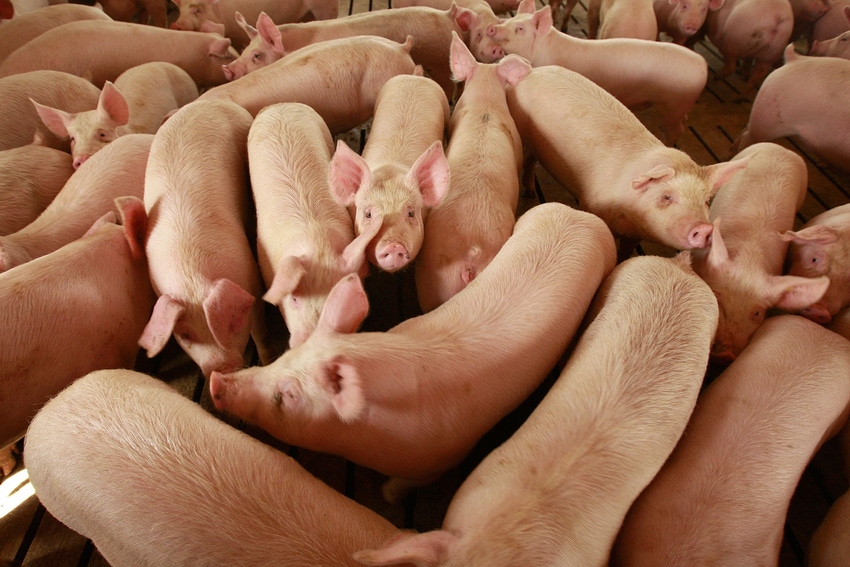Hog futures have dropped $18 per animal since speculation about China's retaliation against U.S. pork began on March 1.
May 29, 2018

U.S. pork producers have lost $2.2 billion on an annualized basis due to events leading up to and following China’s 25% punitive tariffs in retaliation for U.S. tariffs on aluminum and steel, according to Iowa State University economist Dermot Hayes.
The National Pork Producers Council (NPPC) called for a swift resolution to the U.S.-China trade dispute, paving the way for increased U.S. pork exports to the world’s largest pork-consuming nation.
“U.S. pork has invested significantly to ramp production to capitalize on growth opportunities around the world, including China and other markets throughout the Asia Pacific region,” said NPPC president Jim Heimerl, a Johnstown, Ohio, pig farmer. “We applaud the Administration for making the expansion of agriculture exports a cornerstone of the discussions with China. We hope the next round of trade talks with China results in improved market access to a critical export market for U.S. pork and other farm products.”
“Since March 1, when speculation about Chinese retaliation against U.S. pork began, hog futures have dropped by $18 per animal, translating to a $2.2 billion loss on an annualized basis,” Hayes said. “While not all of this lost value can be attributed to trade friction with China, it is certainly the main factor.”
Nathen Bowen, executive director of public policy at the National Association of State Departments of Agriculture, testified at a U.S. Trade Representative hearing on the proposed Section 301 tariffs that Chinese customs enforcement is ramping up its checks on U.S. pork imports and is now sampling from about 20% of U.S. pork shipments instead of the previous 5%.
Bowen noted, “What’s just as significant is that there has been no change in the level of checks on similar imports from other countries,” including Canada and the European Union.
The market disruption caused by export market uncertainty comes at a time when U.S. pork is expanding production to record levels. Five new pork processing plants have recently opened or will soon begin operations, increasing U.S. pork production capacity by approximately 10% from 2015 levels by next year. Exports accounted for more than $53 of the average $149 value of a hog last year and support more than 110,000 U.S. jobs. The U.S. has, on average, been the top global supplier of pork over the last 10 years.
“We produce the safest, highest-quality and most affordable pork in the world,” Heimerl added. “We are dependent on exports and are one of the few sectors of the U.S. economy that can immediately reduce the trade imbalance with China, where pork represents approximately 10% of the consumer price index. Eliminating punitive tariffs and improving access to China by eliminating or reducing tariffs on frozen and chilled pork would result in an explosion of pork exports, contributing significantly to U.S. economic growth and reduction of the trade deficit.”
You May Also Like

.png?width=300&auto=webp&quality=80&disable=upscale)

